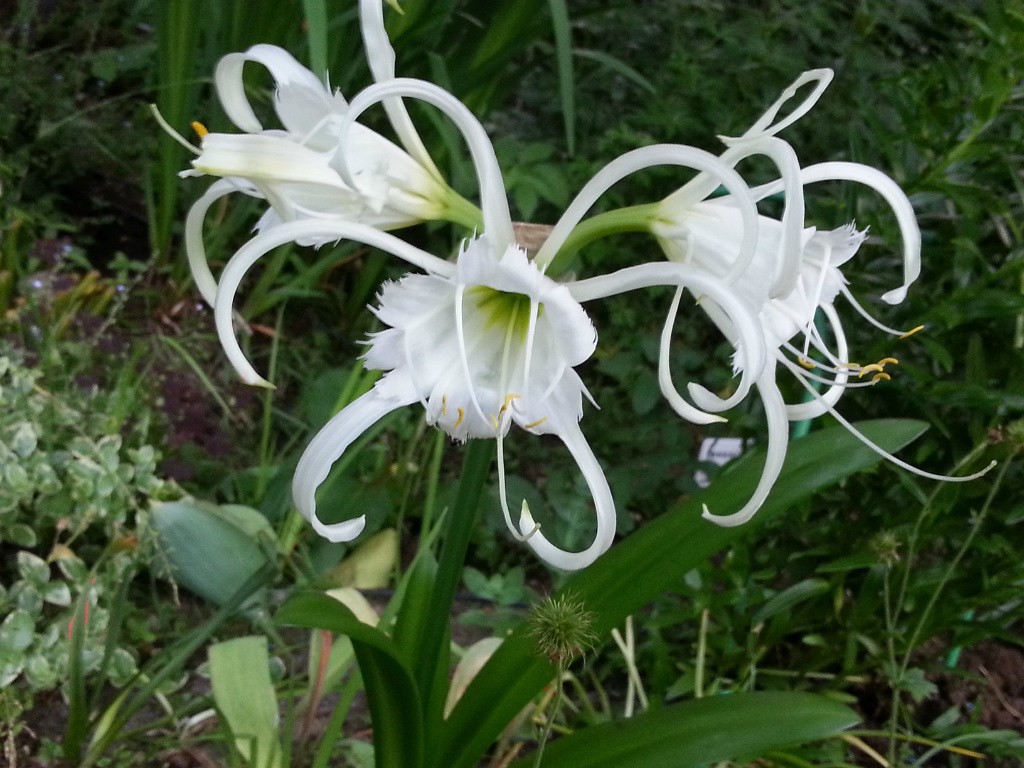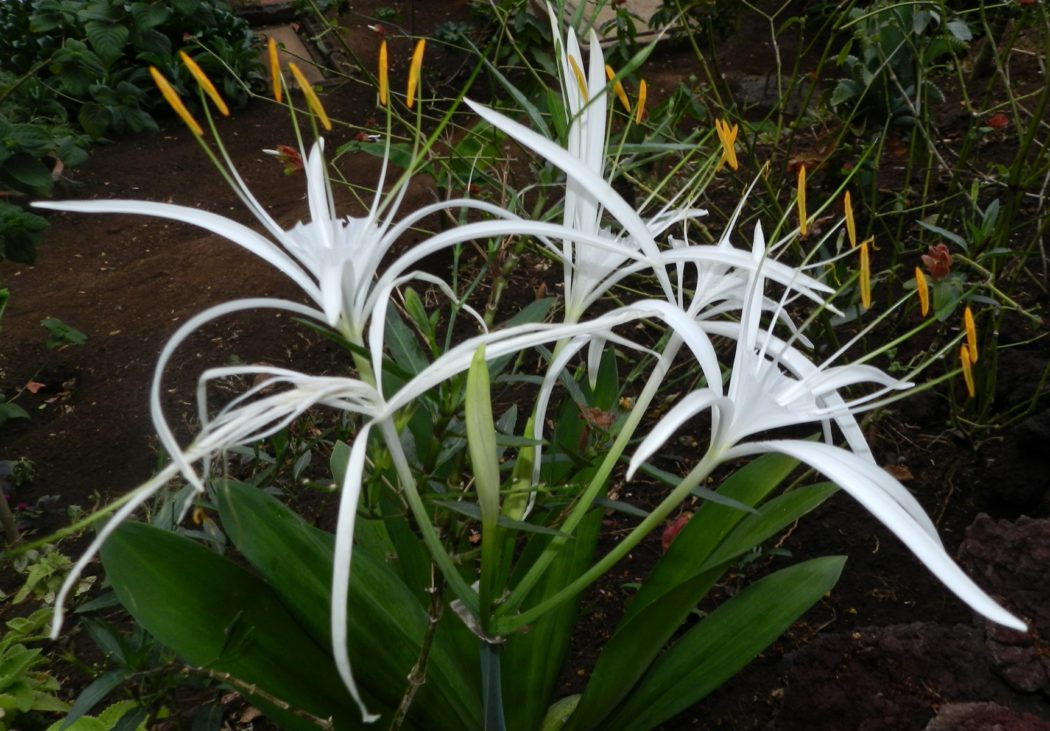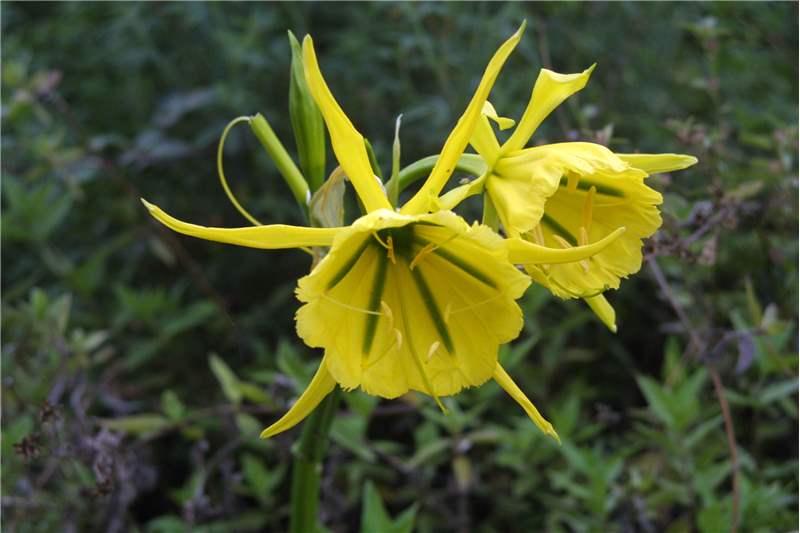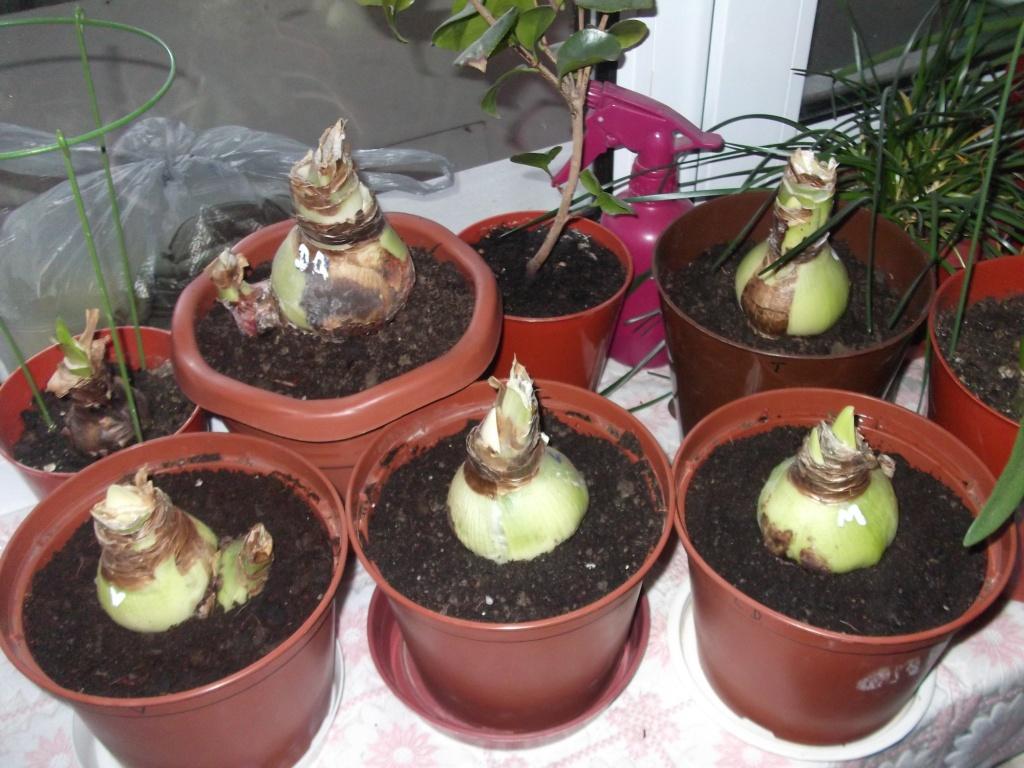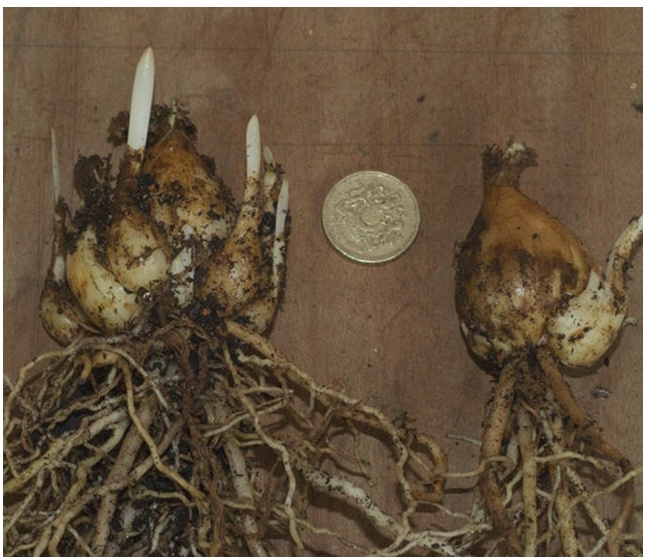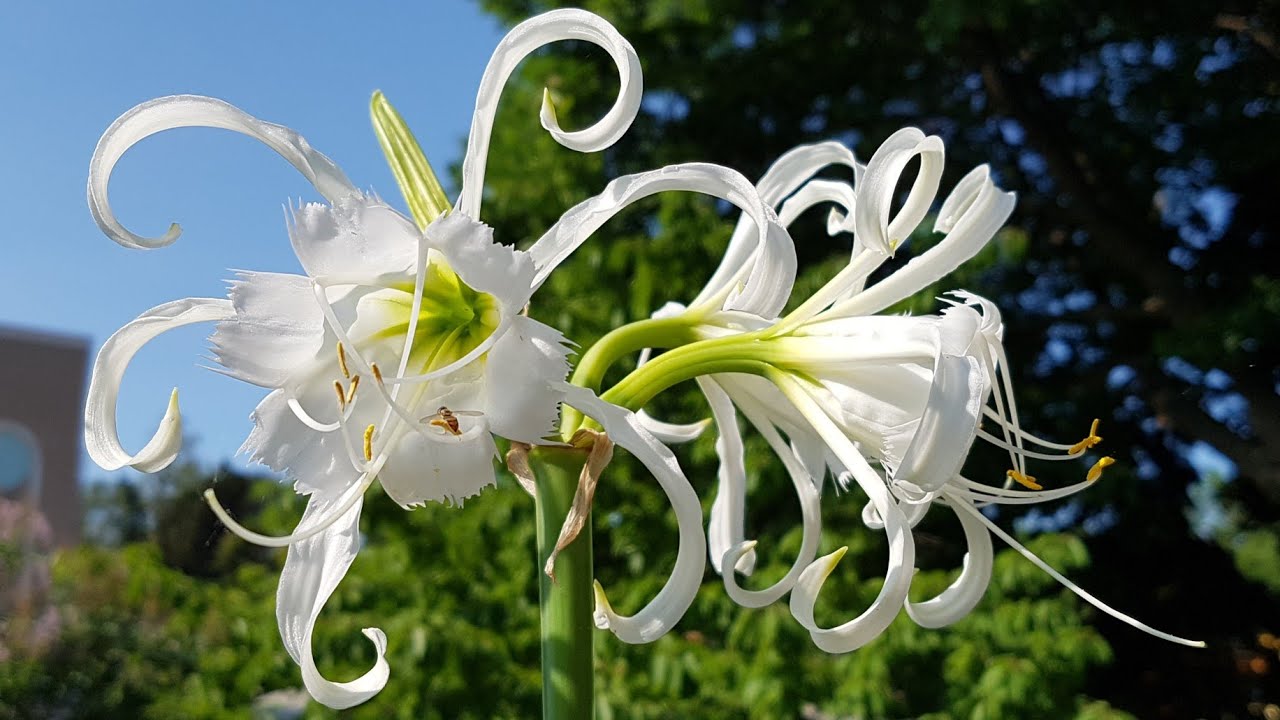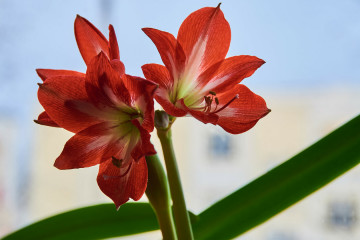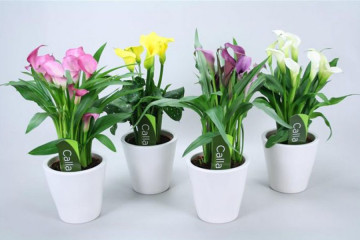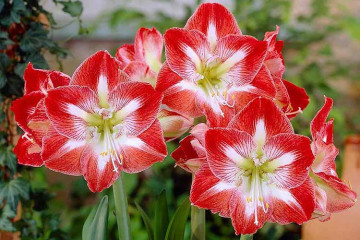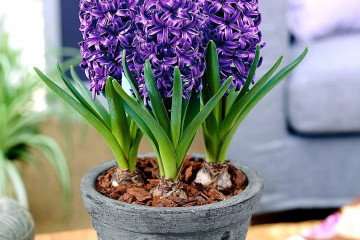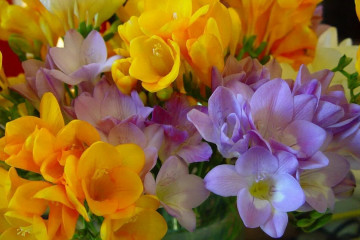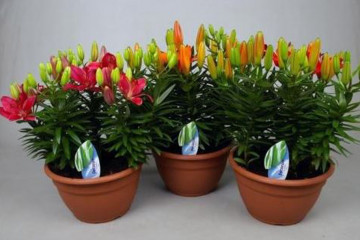Hymenokallis - home care
Content:
Lovers of exotic on the windowsills will surely be attracted by an unusually flowering plant - hymenokallis. This bulbous culture is interesting for its flowering. A flower on a long peduncle, similar to a white spider, has recently been popular among florists in different countries.
Hymenokallis. Botanical description
The plant is a representative of the genus Hymenokallis of the Amaryllis family. The homeland of growth is Latin America and the Caribbean. In some sources, the flower is called hymenokallis festalis, but this is not true. Hymenocallis festalis is a flower of the Ismene genus, the Amaryllis family.
The hymenokallis flower has a pear-shaped bulb with bright dry scales. As they grow older, the bulb can reach a diameter of 12 cm. The pointed leaves in the shape of a sword, up to 1 m long, are bright green in color.
The flowers of culture look like a lily or a star, but to some they resemble a spider. The buds are located on a long hollow tube, bloom in narrow sepals. The flower is white with a green base, 12-17 cm in diameter. 6-8 flowers with a pleasant aroma are formed in the umbellate inflorescences.
Varieties of hymenokallis
All over the world there are almost 50 varieties of the hymenokallis "lily". The following varieties are most common:
- Hymenokallis Caribbean. One of the representatives of the flora of Jamaica and the Caribbean. A perennial plant that blooms during the cold season. Leaves and peduncle reach half a meter. Abundant flowering, up to 10 inflorescences.
- Hymenokallis is lovely or pleasant. Inhabitant of dry Caribbean forests. It grows up to 45 cm long, during the season it builds up 8 lanceolate leaf plates. Umbrella flower with elongated sepals.
- Early hymenokallis. A native of the mountains of Mexico. The only one of the family is grown outdoors. The flowers are white, with spirally twisted petals. The stamens grow together to form a crown.
- Hymenokallis coastal. Abundant flowering, large buds. At home, the variegation of the leaves is manifested.
- Daffodil. It differs from others in the yellow or purple color of the petals. Flowering lasts more than three months in a row.
Home care
Despite the fact that hymenokallis tolerates home care well, it is necessary to adhere to several simple rules of agricultural technology. Failure to observe them can lead to the death of the culture.
Temperature control and lighting
The plant does not like heat, therefore, during the growing season, it is advisable to adhere to a temperature regime within 18-22 ° C of heat. Loves diffused light. Feels good on southeast windows. In the warm season, you can take it outside or on the balcony.
If this is not possible, then you need to arrange a rest for the flower by lowering the temperature to 15 ° C.To do this, you can move it closer to the window glass or install a foam barrier between the window sill and the radiators so that less hot air flows to it.
Watering and humidity
The tropical dweller loves humidity. Therefore, he needs to create similar conditions in the house. This is one of the nuances in growing hymenokallis lilies. It is very important to regulate the watering, in which the moisture will not stagnate in the pot, but the soil should not be allowed to dry out. The water must be settled (for at least 2 days) and not cold.
Spraying is carried out infrequently: 2 times a week in summer is enough. At the same time, they try not to get moisture on the peduncle and bulb. In winter, hymenokallis does not need spraying. Dust from the leaves is removed with a damp sponge.
Soil and container for a flower
A young plant needs frequent transplantation, up to 2 times a year. A bulb that has reached the age of four years can be transplanted once every 3 years. This is usually done during the resting period of the hymenocallis.
The soil mixture must be moisture permeable and nutritious. In specialized stores, they sell ready-made universal soil, but you can also prepare it yourself. This will require:
- one part of peat, sand and humus;
- two parts of a clay-sod mixture;
- one piece of sheet soil;
There is an easier way to prepare potting mix. A ready-made soil substrate for bulbous plants is taken and crushed charcoal is added to it as an element of disease prevention.
So that moisture does not stagnate and does not provoke rotting of the bulb, drainage must be placed on the bottom of the container. It can be expanded clay, polystyrene, broken brick.
It is better to choose pots for planting hymenokallis 2-3 cm larger than the bulb. Thus, the root system will need a little time to develop the capacity, which will entail a faster onset of the flowering period.
Top dressing
To feed the plant, liquid fertilizers are used for bulbous crops. Universal ones are also suitable, but in liquid form. It is better not to get carried away with nitrogen-containing preparations. They stimulate abundant foliage well, thereby delaying flowering time.
Fertilizers are applied to wet soil 2 times a month. With the onset of cold weather, feeding should be stopped completely until spring.
Flowering and dormant periods
The indoor plant hymenokallis does not have a pronounced dormant period: it does not shed its leaves by winter. But nevertheless, this state occurs in him in an implicit form. Often inexperienced gardeners are interested in why the culture does not bloom. And all because he was not satisfied with a period of rest.
To see flowering, the onion must be allowed to rest. To do this, in late autumn, watering is reduced, the air temperature is lowered to 15-18 ° C, and fertilization is stopped. With the onset of spring, they begin to moisturize and feed more often. The timing of flowering depends on the type of plant, but most often by the end of spring or early summer it will already be possible to admire the beautiful and fragrant flowers.
Reproduction of hymenokallis
Reproduction of hymenokallis occurs in three ways:
- Seeds. The method is laborious and unjustified. Seeds are sown in moist sandy peat soil. The first shoots hatch by the end of the third week, and can sit in the ground for up to three months. Further care for the seedlings consists in proper regular watering and protection from direct sunlight.
- Daughter bulbs. During transplantation, onion babies are separated from the mother plant and planted in a separate container with sand and peat. Harvested in a shaded place before germination.Then, by the transfer method, they are transplanted into the prepared soil mixture and looked after as an adult plant.
- By dividing the bulb. Sometimes it happens that the culture does not grow daughter bulbs or is old. Then the method of dividing the bulb is suitable for reproduction. To do this, it is cut into 2 or 4 parts with a sharp sterile knife. A piece of the bottom and neck should remain on each part. The slices are sprinkled with ash, cinnamon or crushed coal and left to dry for 3 hours. Then, for about two weeks, they are germinated in wet sand or sawdust until roots form. This is followed by transplant and standard care.
Diseases and pests
Improper care or lack of it provokes the development of diseases in any plant, including hymenocallis. To prevent this from happening, the flower must be properly looked after. If the disease does occur, it is necessary to fight it. Among the serious problems that can be faced are the following:
- Anthracnose. It happens due to excess moisture in the soil. It is characterized by yellowing of the tips of the foliage, then they become dark brown. Black spots appear on the inside of the leaf. To combat anthracnose, fungicides are used, the damaged leaf is cut off. For prevention purposes, it is necessary to establish proper watering and regular ventilation.
- Mealybug. It manifests itself as white lumps on the leaves. Further, the deformation of the sheet plate and its dying off occurs. Mealybug disease occurs from overdried soil and air. As a treatment, watering is established, the earth is shed with "Aktara" 3 times with a weekly interval.
- Shield. Brown scales appear on the leaves and peduncle. The leaf begins to turn yellow, wither and dry out. To combat the scabbard, you need to remove all the bumps and scales with a cotton swab, having previously moistened it in soapy water or a weak alcohol solution. Then fungicides are used for watering and spraying.
- Red burn. Fungal disease transmitted by spores from a diseased plant. On the bulb from it, depressed spots of red appear. Treatment begins with the fact that the bulb is taken out and all damaged areas are cut out. Then it is soaked in Fundazole, then dried for several days and transplanted into clean soil.
- Narcissus fly. This parasite inhibits plant growth. It makes holes in the bulb, and lays the larvae there. To prevent the plant from dying, it is taken out of the pot and placed under a hot shower with a water temperature of 45 ° C. Then the onion is dried, sprinkled with wood ash and planted. The soil is spilled with "Aktara", "Fastak" or other fungicides.
Hymenokallis is a perennial bulbous culture that is grown not only in the house, but also in the garden. With good care, it will delight its owner for more than one year. It is not difficult to look after him, and sometimes it is even pleasant, because the gardener will be rewarded with chic, fragrant, unusual flowers.
